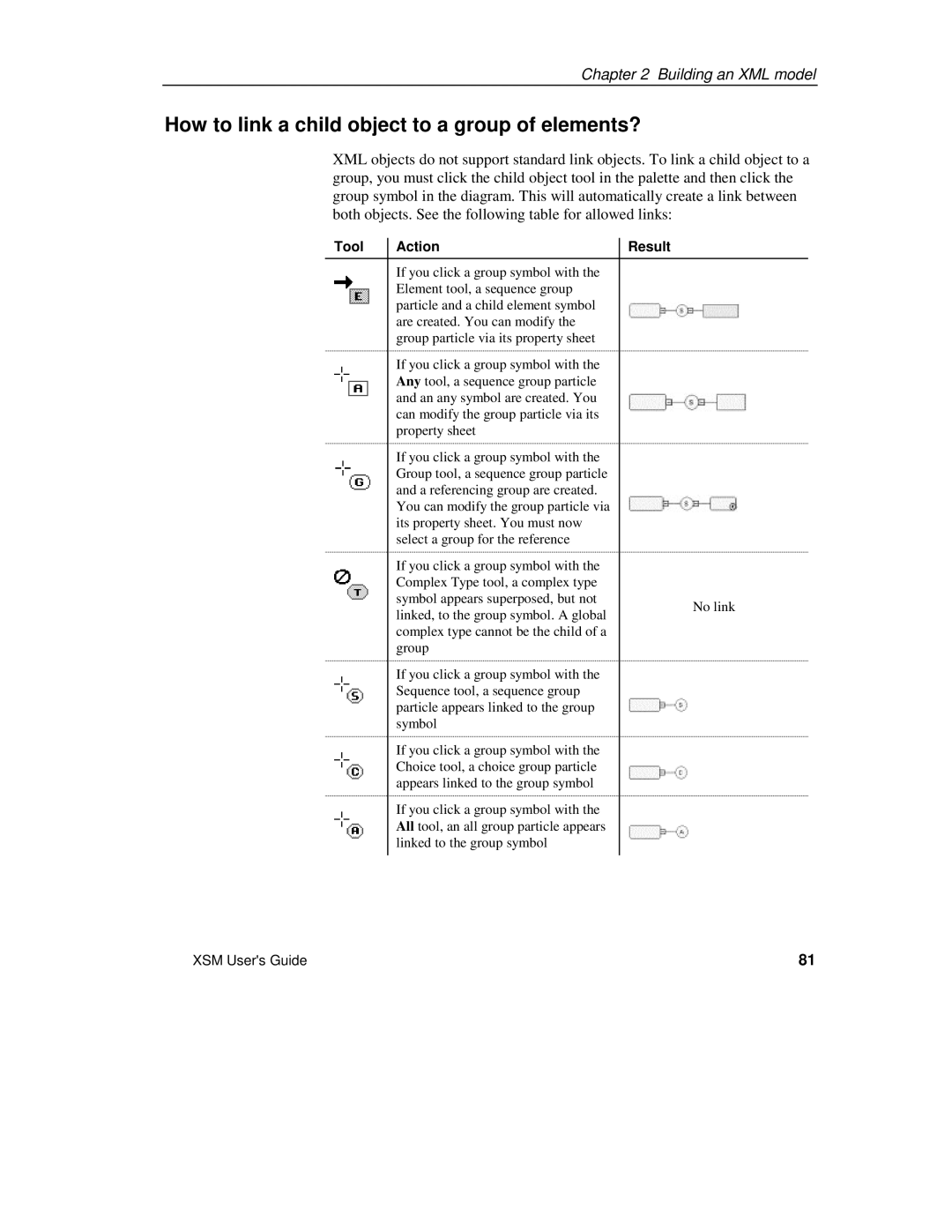
Chapter 2 Building an XML model
How to link a child object to a group of elements?
XML objects do not support standard link objects. To link a child object to a group, you must click the child object tool in the palette and then click the group symbol in the diagram. This will automatically create a link between both objects. See the following table for allowed links:
Tool | Action | Result |
| If you click a group symbol with the |
|
| Element tool, a sequence group |
|
| particle and a child element symbol |
|
| are created. You can modify the |
|
| group particle via its property sheet |
|
| If you click a group symbol with the |
|
| Any tool, a sequence group particle |
|
| and an any symbol are created. You |
|
| can modify the group particle via its |
|
| property sheet |
|
| If you click a group symbol with the |
|
| Group tool, a sequence group particle |
|
| and a referencing group are created. |
|
| You can modify the group particle via |
|
| its property sheet. You must now |
|
| select a group for the reference |
|
| If you click a group symbol with the |
|
| Complex Type tool, a complex type |
|
| symbol appears superposed, but not | No link |
| linked, to the group symbol. A global | |
|
| |
| complex type cannot be the child of a |
|
| group |
|
| If you click a group symbol with the |
|
| Sequence tool, a sequence group |
|
| particle appears linked to the group |
|
| symbol |
|
| If you click a group symbol with the |
|
| Choice tool, a choice group particle |
|
| appears linked to the group symbol |
|
| If you click a group symbol with the |
|
| All tool, an all group particle appears |
|
| linked to the group symbol |
|
|
|
|
XSM User's Guide | 81 |
